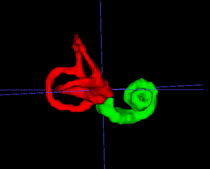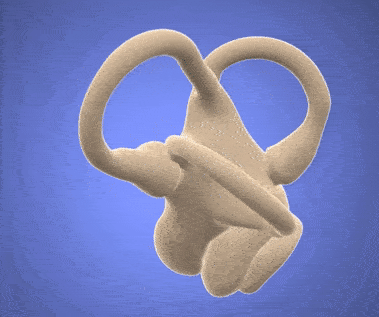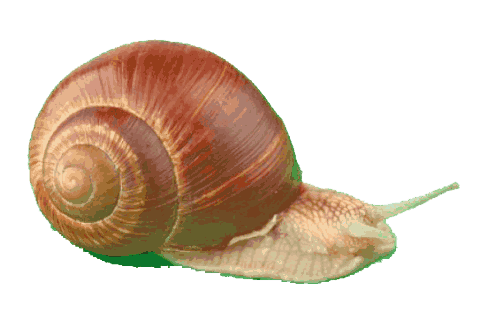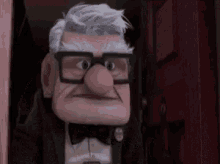What is the Inner Ear?
 Much like our inner worlds, the inner ear is intricate and complex. Also much like the protective shell we present to others, the inner ear maintains a bony outer casing known as the osseous labyrinth. This bony labyrinth houses the membranous labyrinth, which contains a number of sensory structures.
Much like our inner worlds, the inner ear is intricate and complex. Also much like the protective shell we present to others, the inner ear maintains a bony outer casing known as the osseous labyrinth. This bony labyrinth houses the membranous labyrinth, which contains a number of sensory structures.
 These sensory systems include the vestibule and semicircular canals, as well as the cochlea. The vestibule and semicircular canals are like tubes within the inner ear that help maintain balance and posture regardless of gravity or head position. These structures achieve this through a fluid known as endolymph, which interacts with hair cells to let the brain know that movement is occuring. Think of this mechanism like a balance you might use to hang a poster on your wall.
These sensory systems include the vestibule and semicircular canals, as well as the cochlea. The vestibule and semicircular canals are like tubes within the inner ear that help maintain balance and posture regardless of gravity or head position. These structures achieve this through a fluid known as endolymph, which interacts with hair cells to let the brain know that movement is occuring. Think of this mechanism like a balance you might use to hang a poster on your wall.
 The osseous labyrinth also contains one of the most unique structures in the human body, the cochlea. The cochlea is the spiral, snail-like cavity in the labryinth and contains the sensory organs essential for hearing. The cochlea coils about 2.75 times in most humans (Humes & Bess, 2014). The winding channels are subdivided into the scala media filled the previously mentioned endolymph fluid. The scala vestibuli, and scala tympani are filled with similar fluid called perilymph that cushions the delicate structures. The cochlear duct contains the basilar membrane, which houses the organ of Corti. The organ of Corti has about 30,000 hair cells, cilia, that are each connected to a nerve fiber that transmits impulses to the auditory nerve (Ervin, 2021). These hair cells are essential for converting mechanical sound into the elctrical signals we recognize as sound.
The osseous labyrinth also contains one of the most unique structures in the human body, the cochlea. The cochlea is the spiral, snail-like cavity in the labryinth and contains the sensory organs essential for hearing. The cochlea coils about 2.75 times in most humans (Humes & Bess, 2014). The winding channels are subdivided into the scala media filled the previously mentioned endolymph fluid. The scala vestibuli, and scala tympani are filled with similar fluid called perilymph that cushions the delicate structures. The cochlear duct contains the basilar membrane, which houses the organ of Corti. The organ of Corti has about 30,000 hair cells, cilia, that are each connected to a nerve fiber that transmits impulses to the auditory nerve (Ervin, 2021). These hair cells are essential for converting mechanical sound into the elctrical signals we recognize as sound.
Pathology:
 Presbycusis is what you might know as age-related hearing loss. Presbycusis is sensorineural, meaning it is caused by damage to the cochlea or a system within the inner ear. Age-related hearing loss often does not have one cause but results from several life experiences that detriment our hearing capacities. Several causes of hearing loss may include: genetic heredity, long-term dietary choices, exposure to loud noises, and the ingestion of ototoxic drugs.
Presbycusis is what you might know as age-related hearing loss. Presbycusis is sensorineural, meaning it is caused by damage to the cochlea or a system within the inner ear. Age-related hearing loss often does not have one cause but results from several life experiences that detriment our hearing capacities. Several causes of hearing loss may include: genetic heredity, long-term dietary choices, exposure to loud noises, and the ingestion of ototoxic drugs.
While one instance of exposure to loud noise or poor dietary decisions will not permanently damage ones hearing, these experiences can accumulate over time, making hearing become less and less acute and our ability to interpret sound decreases. Symptoms of poor hearing loss are usually not instantly noticeable, but the interpretation of higher frequencies begins to drop off first. An audiogram or other hearing evaluations may be necessary to diagnose presbycusis and determine the severity of hearing loss. Age-related hearing loss is primarily irreversible, but treatments such as hearing aids and limiting further risk factors are crucial to preserving hearing capacities (NIDCD, 2016).